The Journey back
Day 3
3rd day: 19 October 2005
After breakfast we headed for a short tour in Gdańsk to see the city during the daytime.
We visited the Old City and saw the Bench of Neptune, the Roman god of the sea, as well as many colorful houses. When we crossed the city square we saw many pigeons, similar to Kraków and many other European cities.
We also visited a niche church where there's an Astronomic clock, similar to the one in Prague.
Afterwards, we said farewell to Gdańsk, and then headed south. On the way, we would stop at the Castle in Malbork, built in Prussia by the Teutonic Order, a German Roman Catholic religious order from the 14th century. The castle is a classic example of a medieval fortress. It was huge and designed in Brick Gothic. There are three-hour tours twice a day, but we decided to skip the tour since we didn't have the time. Avi and I entered the castle and toured it on our own for about an hour. We also couldn't pass up buying souvenirs from the castle shop.
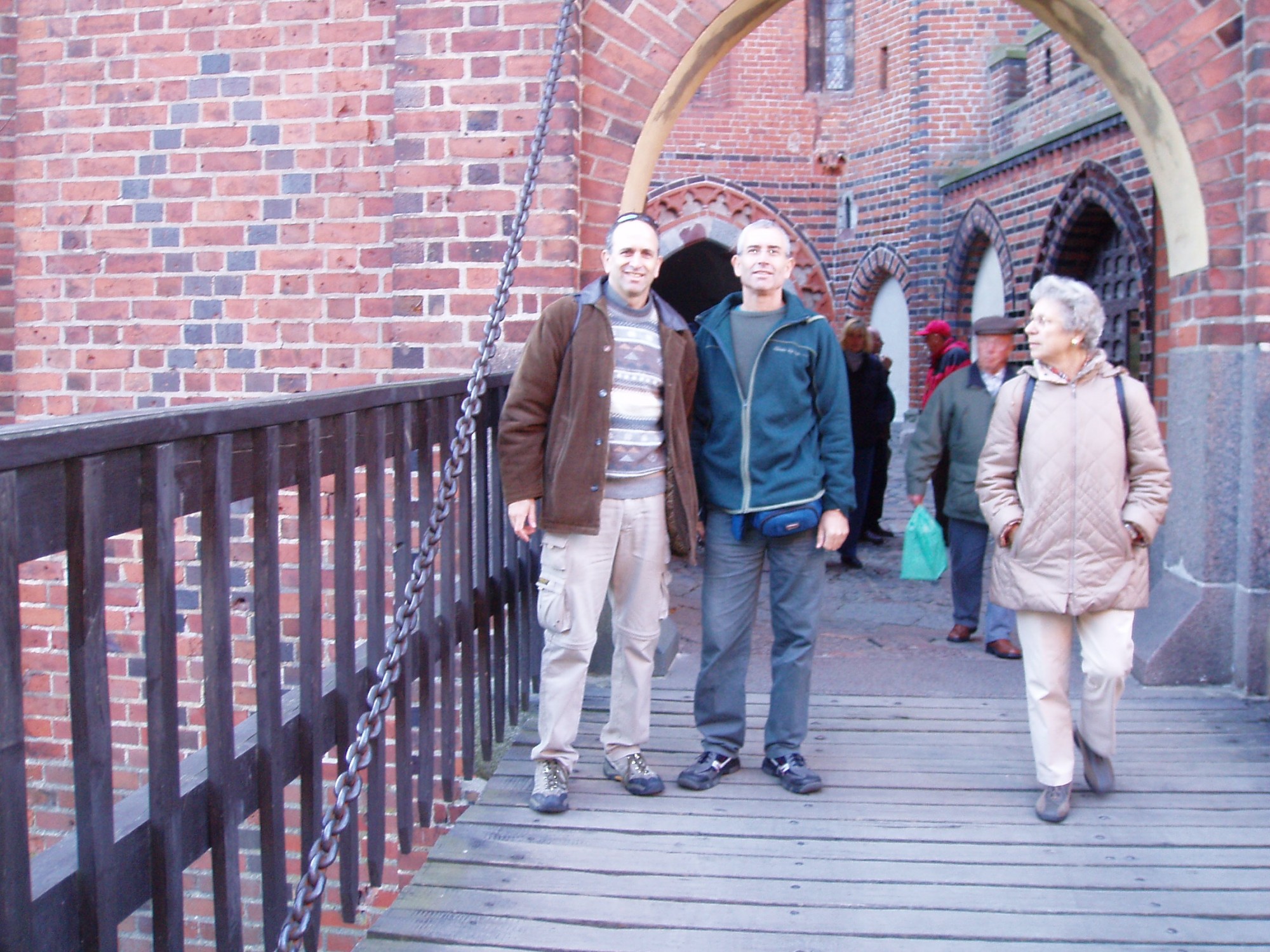
Before arriving at the castle in Malbork, Tomash managed to summon a reporter from the local newspaper who wrote the article in Polish about the concentration camp at Bromberg. When the reporter arrived, we discovered him to be a very pleasant and friendly person. He didn't speak English, but Tomash translated. He willingly gave us information and volunteered to come and tour the camp with us.
During a phone conversation between Tomash and the reporter we were told that he had received bits of information for his articles from an historian that worked in the local university in Bromberg, which is nowadays a Polish city known as Bydgoszcz (pronounced: Bidgotch). Tomash called the historian and he too also willing to join us immediately after the last class he was teaching. He met up with us around noon. We were very lucky to have come across these people who were kind enough to help.
In the center of the city Bydgoszcz, we met with the reporter Krzysztof Blazejewski who writes in the local newspaper 'Express Media,' as well as with the historian, Dr. Aleksander Lasik, who proudly showed us that two articles of his which were published in the book of 'Yad Vashem' that he had brought with him. He didn't know how to read Hebrew, but managed to recognize his articles in the book. After meeting Krzysztof and Dr. Lasik, we all drove to Bydgoszcz. We didn't have high expectations considering mom didn't remember much about the camp there, its shacks, or any details of the area that would help us get a better picture.
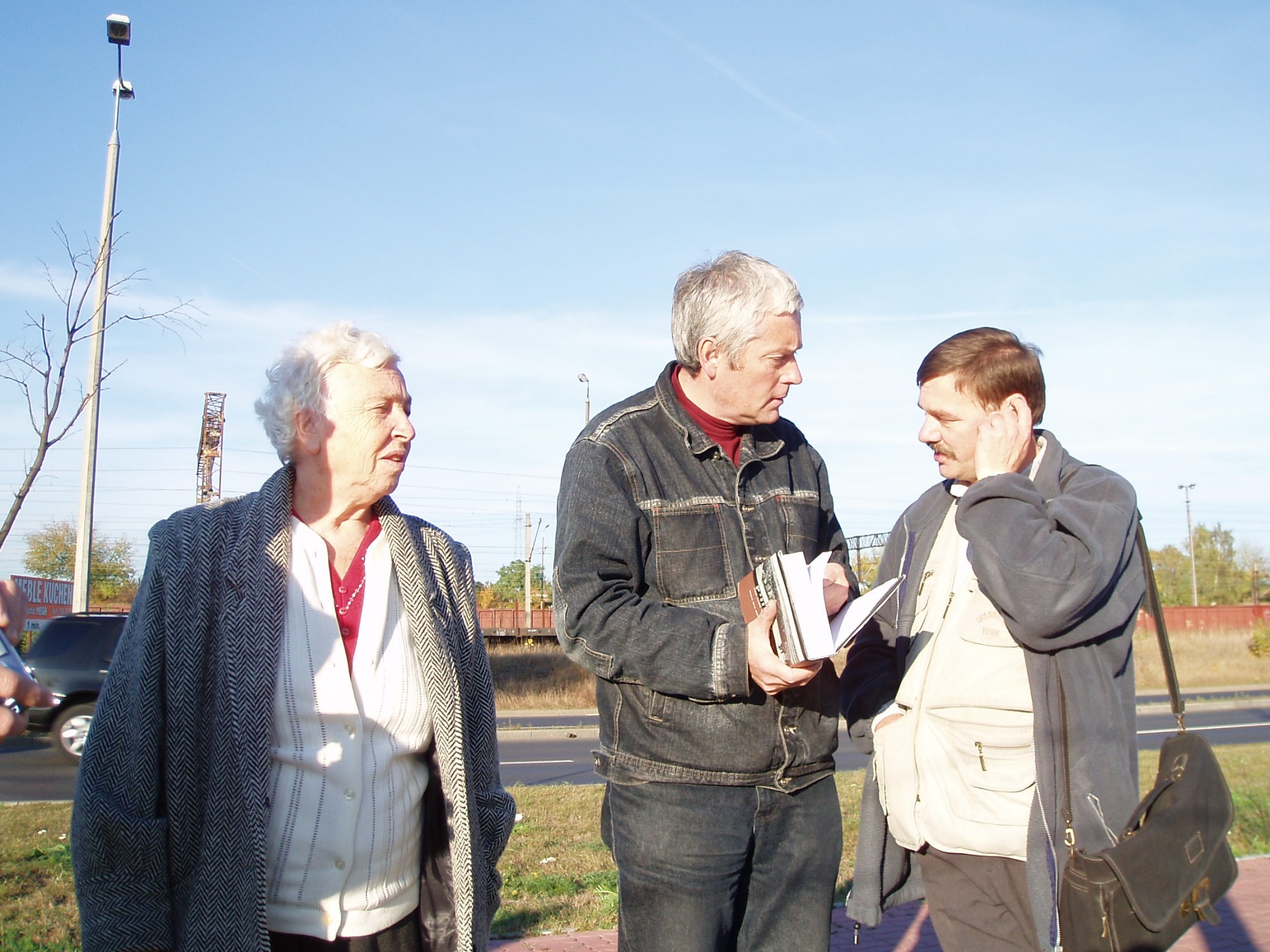
We were told by these two experts that there were two concentration camps in the area. Both were sub-camps of Stutthof:
- Bromberg-Ost (Bromberg-East, which was the female sub-camp of Stutthof between 1944-1945, in the city of Bydgoszcz.)
- Bromberg- Brahnau (pronounced Bromberg-Bruno. This is the German forced labor camp where Sarah was held). It operated between 1940-1945.
First we drove to Bromberg-Ost and walked by the fence of the camp since it seemed there was more information about this one, but unfortunately there wasn't much left of it, and not much for us to see on-site. The camp was destroyed. The only thing left was the fence around it, which was no different than any others. Krzysztof, the reporter, took pictures, asked questions and recorded information on a small tape recorder. He interviewed Sarah, who used Tomash's help in translating her replies.
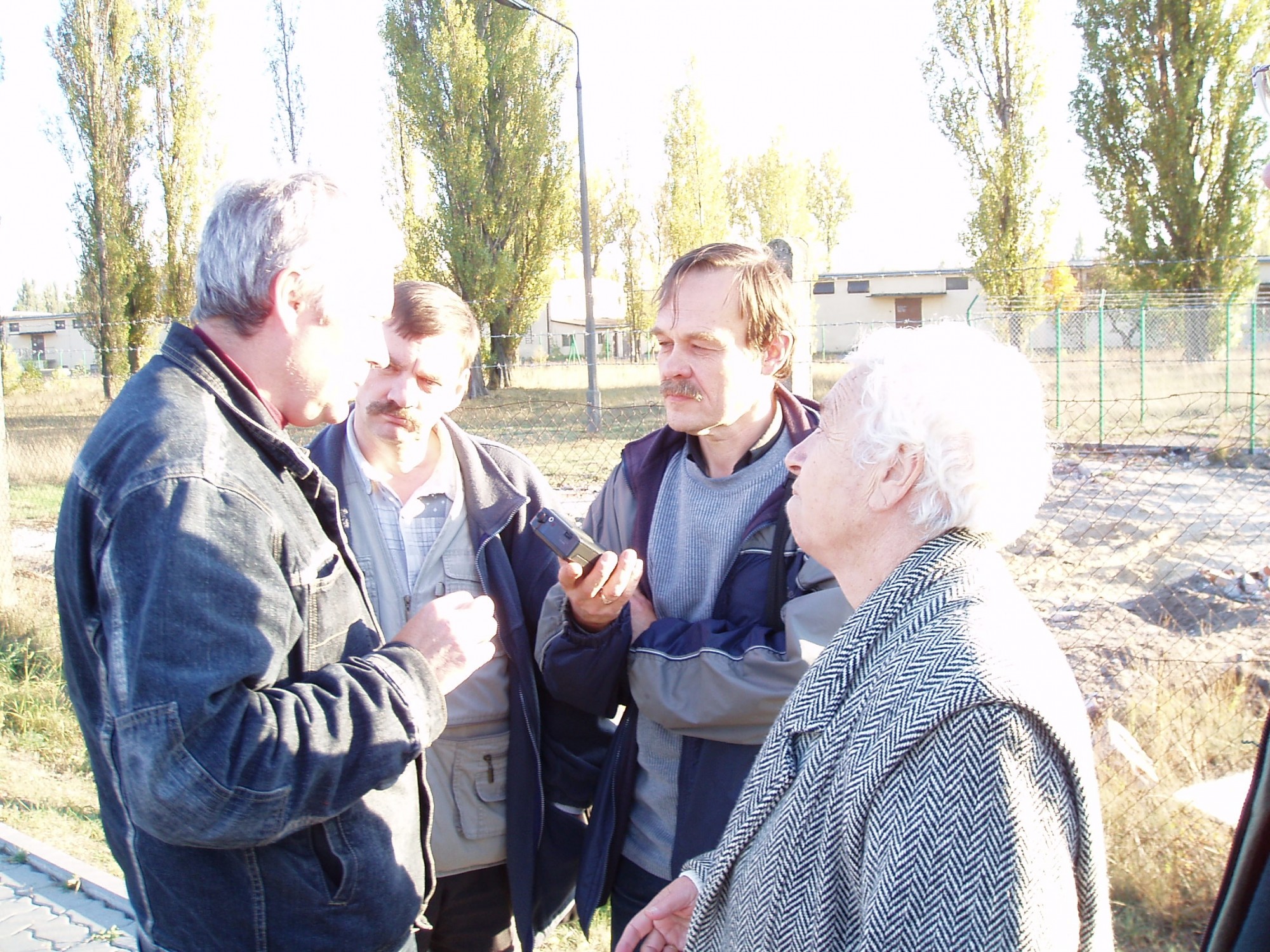 | 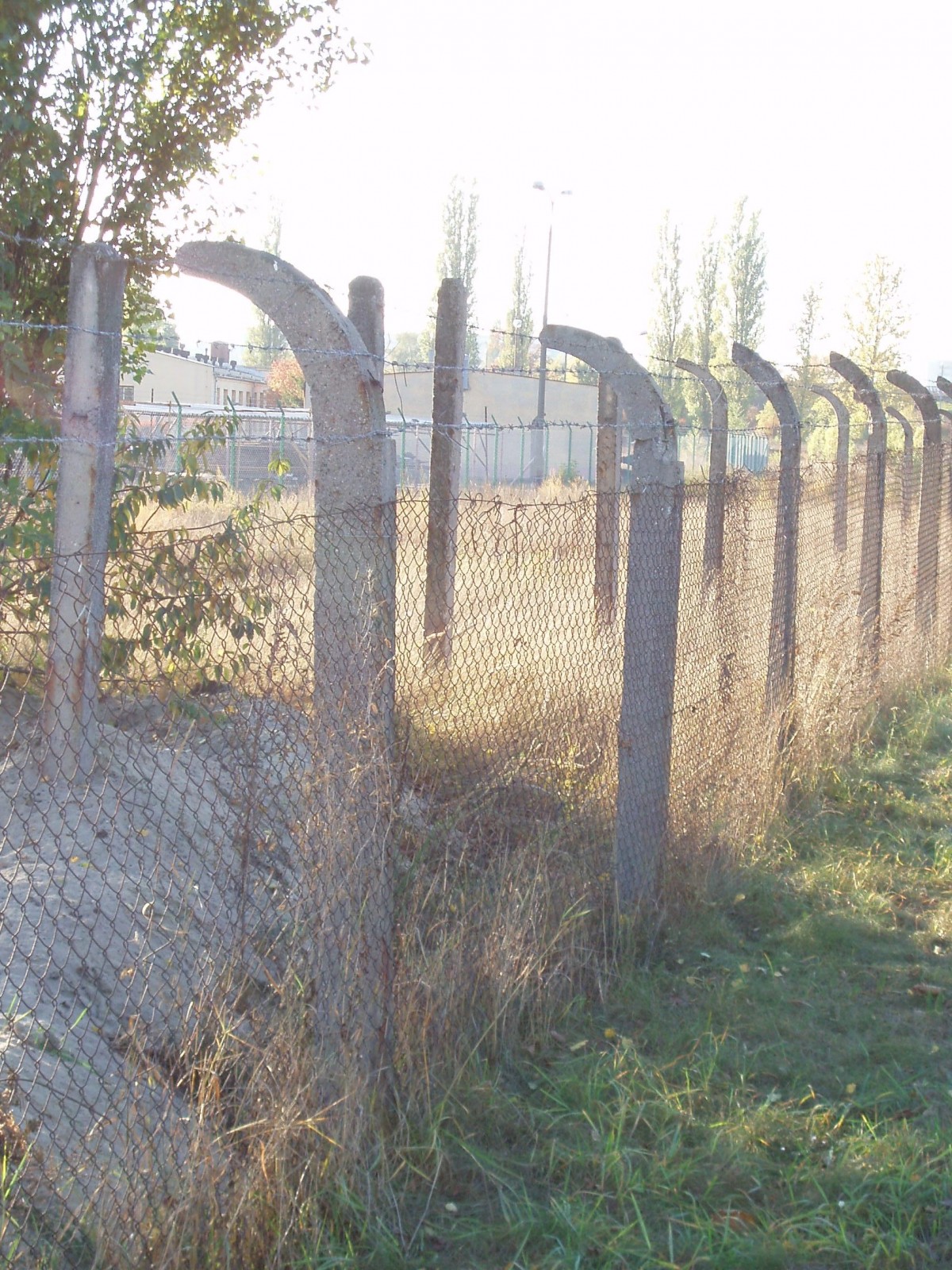 |
Five kilometers away there was the other camp, Bromberg-Bruno (in the town currently named in Polish Bydgoszczy-Legonowie). We couldn't enter since it had been transformed into a chemical plant, a closed compound similar to a military facility (at the entrance there was a sign in Polish: 'Zaklady Chemiczne,' meaning: Chemical Plant.) We never learned its full name.
The plant had been here during WWII, as we were told by locals. I guess mom worked somewhere near the plant, maybe in something related to trains or railways. She doesn't remember these details. It may be because she didn't work inside the plant.
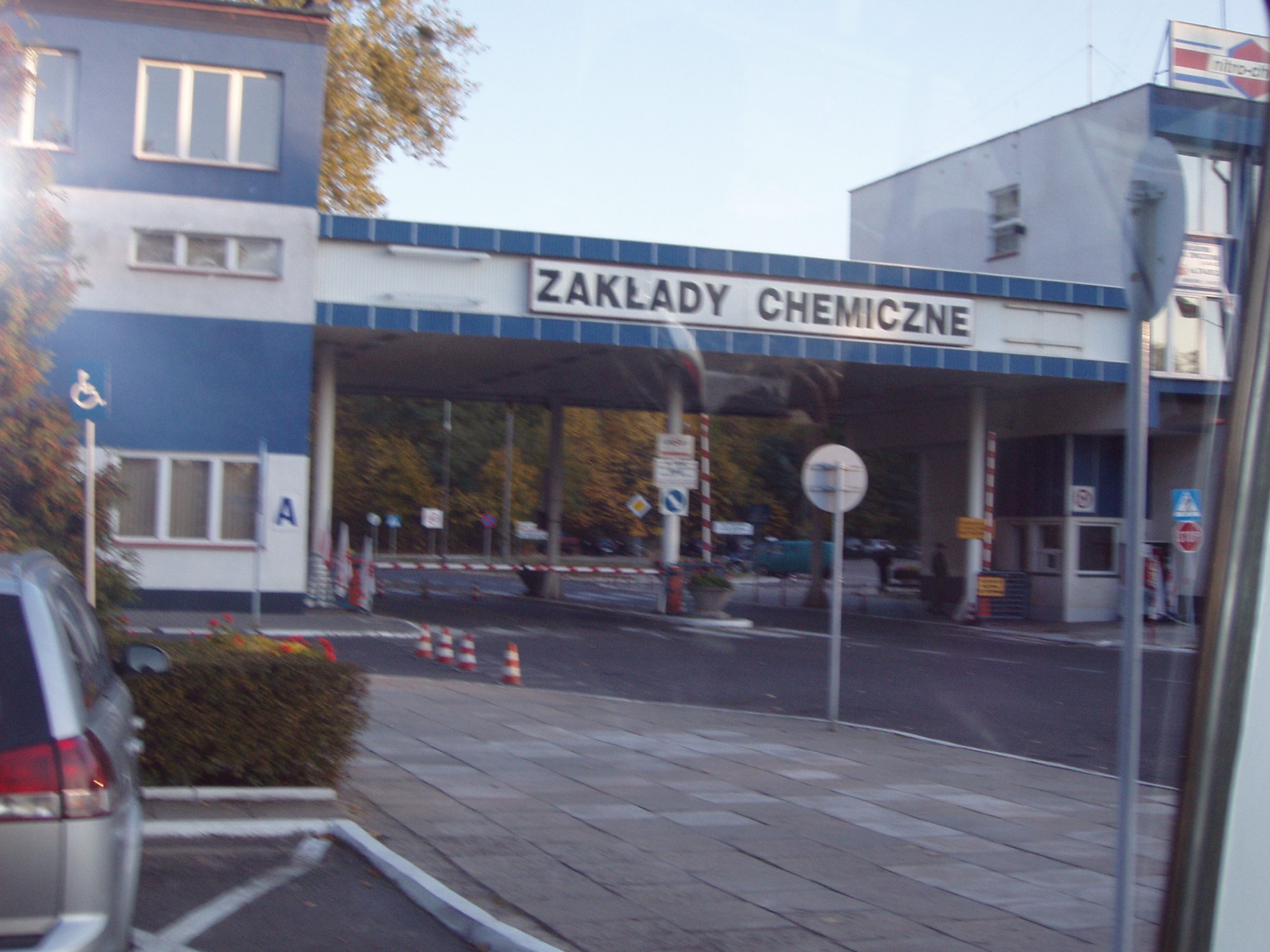
What mom did remember is that every Sunday, the day of rest for Christians, they used to take them by foot a long way from the camp. She remembered crossing an old, unstable railway above the Visla River and from the other side, once they had reached it, they were ordered to dig canals.
We tried to find out where that bridge was located. We drove around the former labor camp/chemical plant which was a vast area surrounded by a fence. We went down a side road and drove through it when all of a sudden the reporter, who knew the area very well, tried to direct us in the right way. Thanks to him we found the bridge.
Mom did not remember the exact details of how the bridge looked, as it was so many years ago. She did, however, remember large holes in the wooden bridge which were big enough to fall through. She said she had been scared to death of falling since she didn't know how to swim.
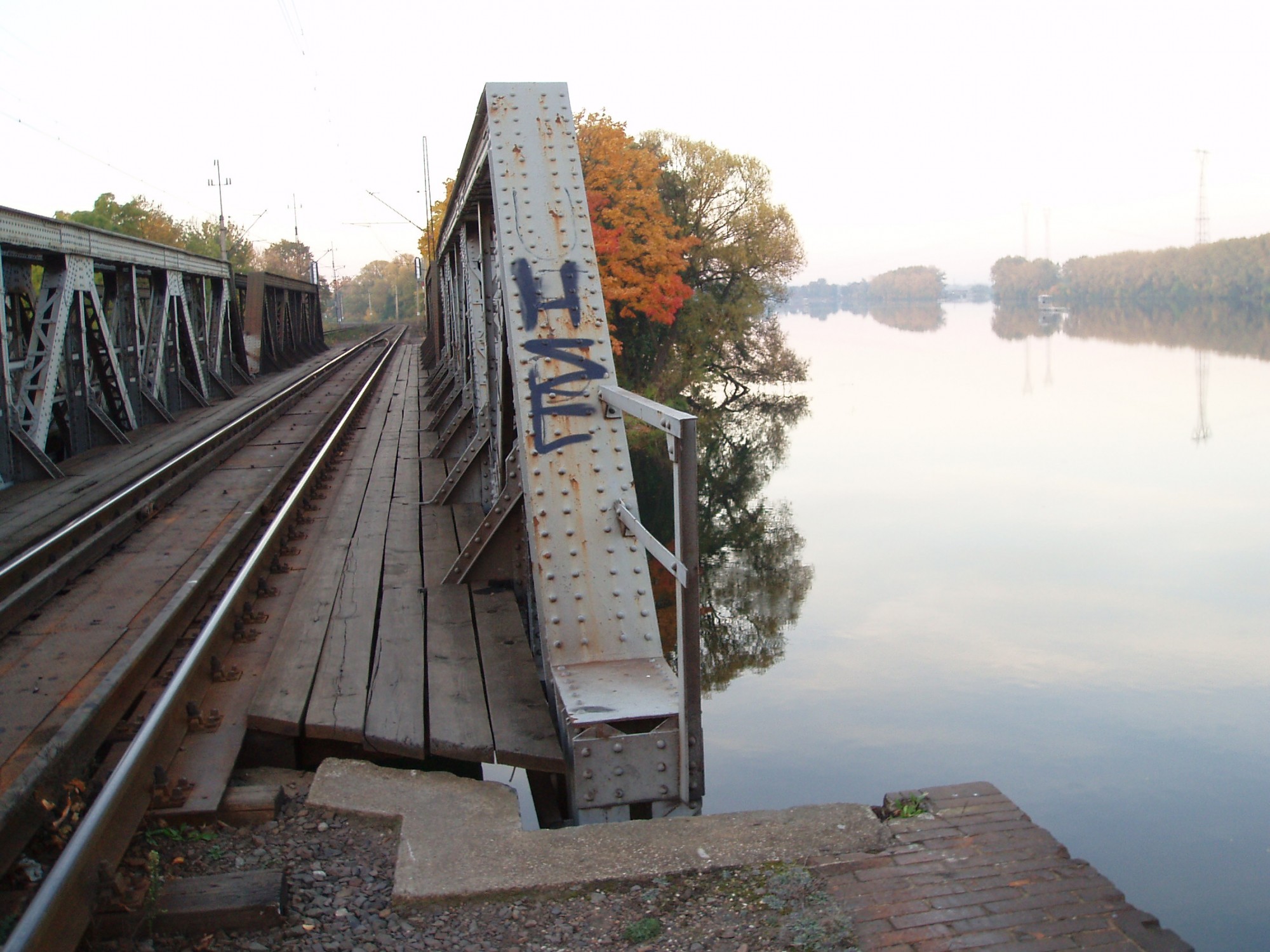
We were very excited to have found the bridge and were pleased that we were filling in the gaps from mom's life story, marking the points she made in her journey. Mom refused to go on the bridge. Avi and I walked on it and saw the wide holes in the wooden boards which one indeed could easily fall through (see pictures). We could imagine that if this bridge was able to stay the way it was since WWII, it would have had to have been reconstructed, or at least renovated. After all, 60 years had passed.
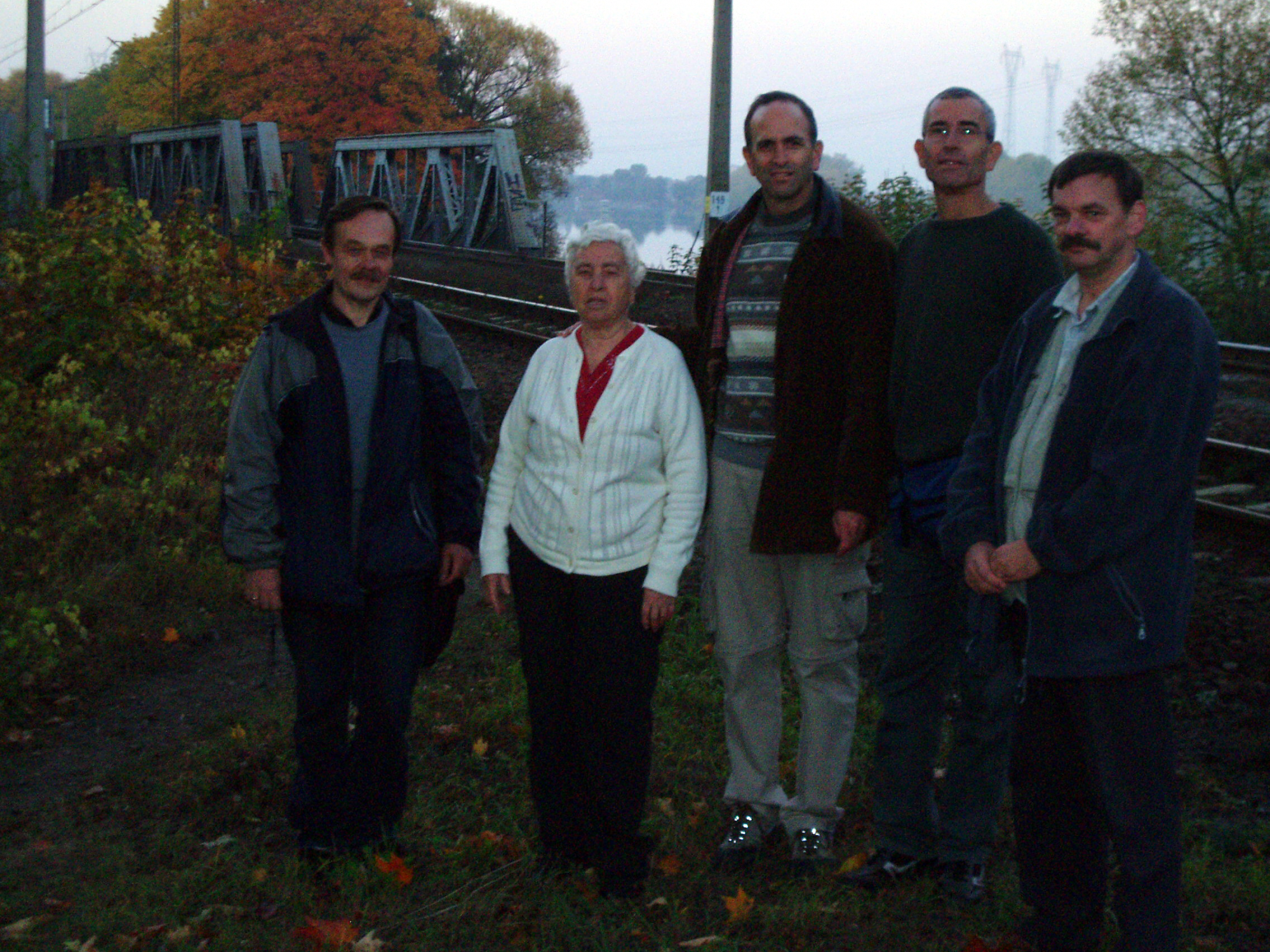
We returned to the main road to Bydgoszcz, where we dropped off the reporter and historian. We bid them them farewell after thanking them for all their help. We felt very lucky to have had them with us.
From there we headed out on a long drive to Warsaw. We spent the night in a small, humble hotel ironically named Premier Class. It was a 2-star hotel, very basic. The room was small and cramped, with an additional small bathroom and toilet next to the shower. Well, I guess this is what you get in return for 169 Zloti for a night. (Zloty means 'golden' in Polish). It was very cheap for a hotel in Warsaw, the capitol.
